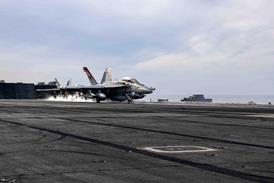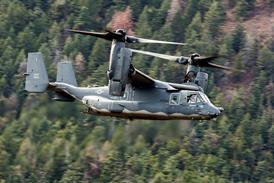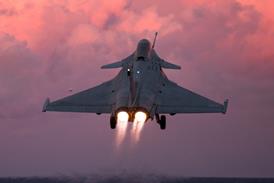MAX KINGSLEY-JONES / LONDON ORIGINAL CUTAWAY BY FRANK MUNGER
After over 30 years' service, Concorde makes its last scheduled flight this week. We pay tribute to one of aerospace's most ambitious but commercially flawed projects
Nestled in the rolling English countryside around 80km (50 miles) from London is a 13th- century village pub - The Bell Inn at Aldworth - which is a small but significant symbol of the admiration people worldwide hold for Concorde.
In September 1978, 100 of the Bell's regulars and their friends - some of whom had never flown before - clubbed together to charter a British Airways' Concorde for its first-ever supersonic charter - the teardrop-shaped flight from Heathrow to the Bay of Biscay that later become the hallmark of the aircraft's charter business, and enabled the "great unwashed" to sample the airliner that was conceived to whisk top-flight executives across the Atlantic at twice the speed of sound.
It was no coincidence that one of the Bell's patrons was Brian Calvert, the BA Concorde captain who operated the first flight to Bahrain in 1976, and it was he who flew that first charter flight.
"I remember at the time that it was a struggle to get the BA charter department to take the proposal seriously," he says. When the Anglo-French supersonic transport programme was launched in 1962, few imagined that the production would run to just 20 aircraft. This ambitious project, which was competing for coverage with two other key aerospace programmes of the decade - the US Apollo moon-landing effort and the Boeing 747 - generated a huge amount of copy for the journalists of Flight International.
Every aspect of the aircraft's political and technical development was covered in great detail within these pages.
Our then Editor, Mike Ramsden, was on board BA's first Concorde service to Bahrain in 1976 to give a first hand account of that historic day. Twenty-four years on, Concorde looked like it was heading for a golden era as it approached the 25th anniversary of commercial services, when the tragedy in Paris on 25 July 2000 thrust the aircraft back into the headlines. The aftermath of this event and the build-up to there turn to flight in November 2001 was to provide another fascinating chapter in Concorde's technical achievements.
Since that first flight in 1969 - and the last in the coming months - the needle-nosed, dart-shaped machine has generated more enthusiasm, controversy and spectator pleasure than another airliner.
Much has been made of Concorde's commercial failure, and the millions of pounds sterling and French francs it cost the two countries' taxpayers. But many later successful designs benefited from its technologies, while the manufacturing consortium brought together the two nations' engineers as never before, and undoubtedly laid the foundations for the success of Airbus.
Arguably it even brought the UK closer to the rest of Europe. When then UK minister of technology Tony Benn acknowledged at the roll-out in December 1967 that the UK-built "Concords" would be spelt with an "e", one of the reasons he gave was that "E" stood for Europe - just as the UK was trying to get French support for its entry into the European Common Market.
Having covered the aircraft in such great detail for more than 40 years, Flight International felt there was little more it could add. So to mark this week's retirement of the aviation icon, we have solicited accounts from the key personnel involved in the programme to tell their Concorde story.
We have also reproduced the report and artwork from December 1962 on the signing of the Anglo-French agreement, and the March 1969 article about the first flight. Our original cutaway, by Frank Munger, which was published in Flight International on 17 January 1976, is also included.
Source: Flight International























